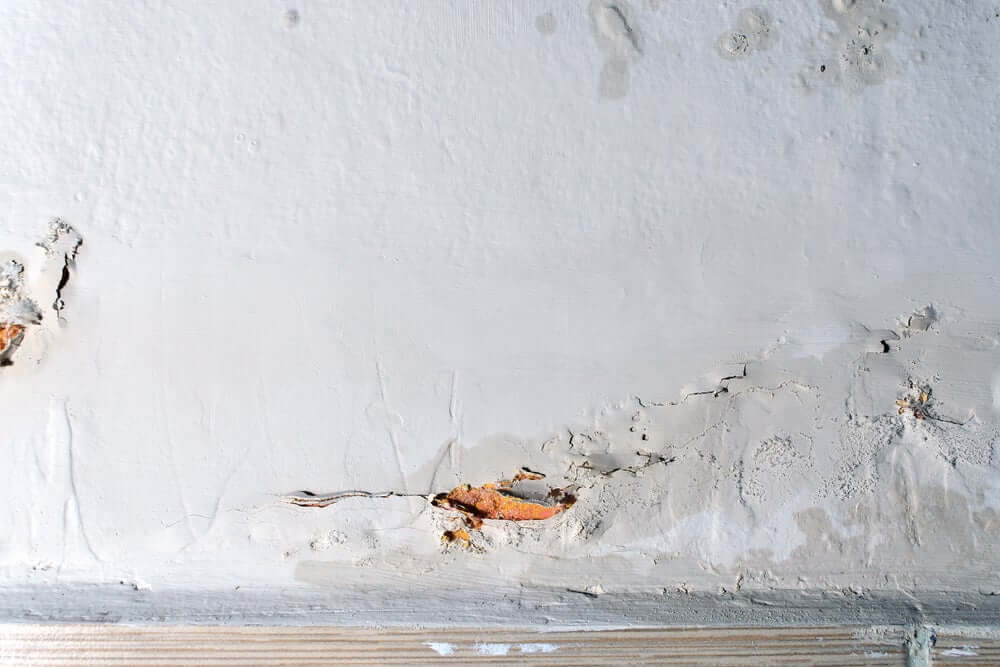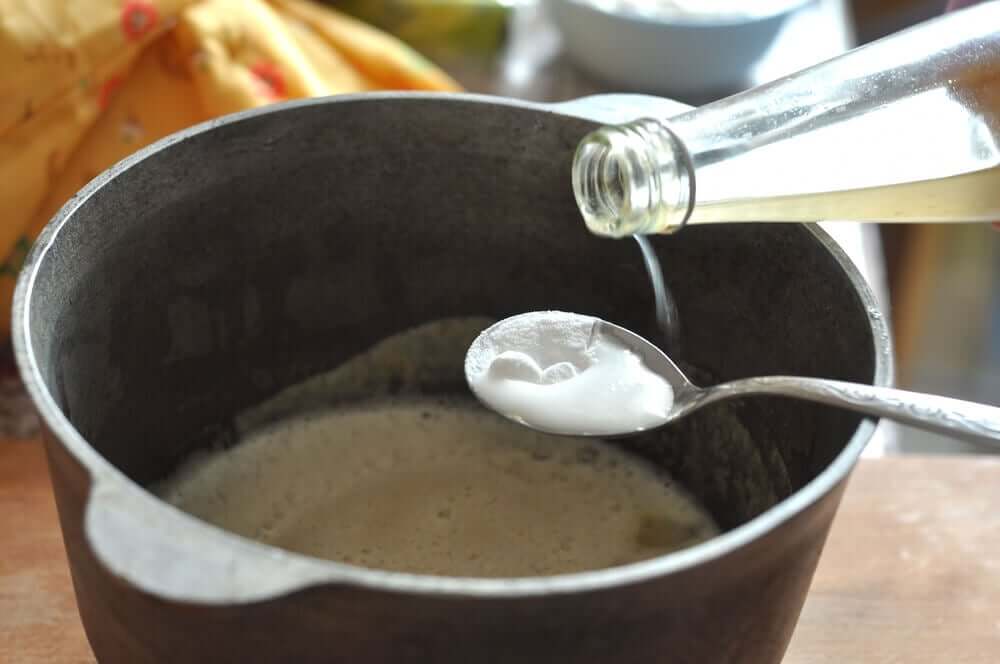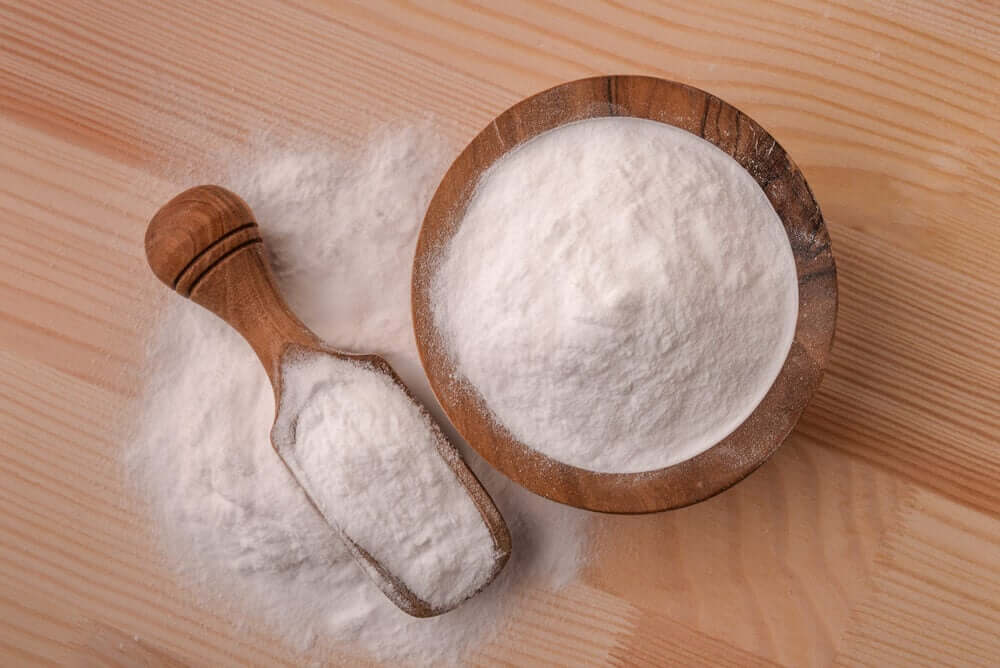How to Remove Mold from Fabrics

There is nothing worse than having mold on any of your furniture. You can end up with mold on wood, plaster, and fabrics. Humidity is the main cause of mold. In this article, we’ll show you how to remove mold from fabrics.
Do you have a storage room or attic where you keep things? If so, this is one of the places where you have the least control over humidity. In fact, in these spaces, mold can spread like crazy.
However, mold can appear anywhere in the home. As a result, you need to regularly check for mold or any indications that mold is developing.
Main problems with mold

Do you have a closet full of clothes that shares a wall with your bathroom? Or furniture right next to a window? Almost anywhere in your house, you can have problems with damp. In fact, this can be from the bathroom or even from the rain outside.
You need to be cautious and be aware of how moisture can affect your belongings. However, sometimes it’s hard to remember to do this when you’re focused on your daily routine.
Sometimes, by the time you realize it, moisture has affected your walls and even fabrics. Mold can spread rapidly. It can cause bad smells and cause materials to deteriorate. In addition, it can get through wood, like a wardrobe, and affect your clothes.
We need to be careful about mold in our homes.
5 steps to remove mold from fabrics with natural products

Mold stains can appear on any fabric. It doesn’t matter if it’s clothing, a tablecloth, a sofa, or the upholstery on a chair. In fact, mold can affect almost any surface. In the long term, this can cause bad odors and fabrics can deteriorate. Follow these 5 steps to remove mold from fabrics.
- Firstly, you need a container to mix the products in. Then, you add a third of a cup of white vinegar and the same amount of carbonated water. (This works better than regular water on mold).
- Second, you need to add two capfuls of hydrogen peroxide. Mix all the ingredients together and then put it in a container where it is easy to access.
- Then, put the mixture on the fabric. It’s best if you actually submerge the fabric into the liquid. However, if you have mold on the upholstery on a sofa or chair, for example, you can spray the mixture on to the surface of the furniture.
- Next, use a toothbrush to scrub the surface. Do this until you can no longer see the mold. However, you need to be careful that you don’t scrub the material so vigorously that you damage it.
- Finally, put the fabric into the washing machine. However, if it’s not machine washable, wash it with soap and water to remove the smell of vinegar.
Solutions for delicate fabrics

You might find mold on curtains or bed sheets. Both of these fabrics can be quite delicate. As a result, it’s important to find a solution that works well with these and won’t damage them.
To clean these fabrics, you’ll need half a glass of white wine vinegar, a tablespoon of fine salt, two tablespoons of baking soda, and a lemon. Alternatively, you can just purchase lemon juice.
As you combine these elements they produce a paste. Using a brush, rub the paste onto the surface until you see the mold disappear. Leave the paste on the fabric for a few minutes so it can take effect. Then, wash the material in the washing machine.
Using this method, you’ll see for yourself the incredible results.
There is no doubt that any of the products we’ve described will produce a great result. So, you can trust any of them to help you with your mold problem and remove mold from fabrics.
There is nothing worse than having mold on any of your furniture. You can end up with mold on wood, plaster, and fabrics. Humidity is the main cause of mold. In this article, we’ll show you how to remove mold from fabrics.
Do you have a storage room or attic where you keep things? If so, this is one of the places where you have the least control over humidity. In fact, in these spaces, mold can spread like crazy.
However, mold can appear anywhere in the home. As a result, you need to regularly check for mold or any indications that mold is developing.
Main problems with mold

Do you have a closet full of clothes that shares a wall with your bathroom? Or furniture right next to a window? Almost anywhere in your house, you can have problems with damp. In fact, this can be from the bathroom or even from the rain outside.
You need to be cautious and be aware of how moisture can affect your belongings. However, sometimes it’s hard to remember to do this when you’re focused on your daily routine.
Sometimes, by the time you realize it, moisture has affected your walls and even fabrics. Mold can spread rapidly. It can cause bad smells and cause materials to deteriorate. In addition, it can get through wood, like a wardrobe, and affect your clothes.
We need to be careful about mold in our homes.
5 steps to remove mold from fabrics with natural products

Mold stains can appear on any fabric. It doesn’t matter if it’s clothing, a tablecloth, a sofa, or the upholstery on a chair. In fact, mold can affect almost any surface. In the long term, this can cause bad odors and fabrics can deteriorate. Follow these 5 steps to remove mold from fabrics.
- Firstly, you need a container to mix the products in. Then, you add a third of a cup of white vinegar and the same amount of carbonated water. (This works better than regular water on mold).
- Second, you need to add two capfuls of hydrogen peroxide. Mix all the ingredients together and then put it in a container where it is easy to access.
- Then, put the mixture on the fabric. It’s best if you actually submerge the fabric into the liquid. However, if you have mold on the upholstery on a sofa or chair, for example, you can spray the mixture on to the surface of the furniture.
- Next, use a toothbrush to scrub the surface. Do this until you can no longer see the mold. However, you need to be careful that you don’t scrub the material so vigorously that you damage it.
- Finally, put the fabric into the washing machine. However, if it’s not machine washable, wash it with soap and water to remove the smell of vinegar.
Solutions for delicate fabrics

You might find mold on curtains or bed sheets. Both of these fabrics can be quite delicate. As a result, it’s important to find a solution that works well with these and won’t damage them.
To clean these fabrics, you’ll need half a glass of white wine vinegar, a tablespoon of fine salt, two tablespoons of baking soda, and a lemon. Alternatively, you can just purchase lemon juice.
As you combine these elements they produce a paste. Using a brush, rub the paste onto the surface until you see the mold disappear. Leave the paste on the fabric for a few minutes so it can take effect. Then, wash the material in the washing machine.
Using this method, you’ll see for yourself the incredible results.
There is no doubt that any of the products we’ve described will produce a great result. So, you can trust any of them to help you with your mold problem and remove mold from fabrics.
All cited sources were thoroughly reviewed by our team to ensure their quality, reliability, currency, and validity. The bibliography of this article was considered reliable and of academic or scientific accuracy.
- AA. VV.: Limpieza de interior de muebles, Vértice, 2009.







